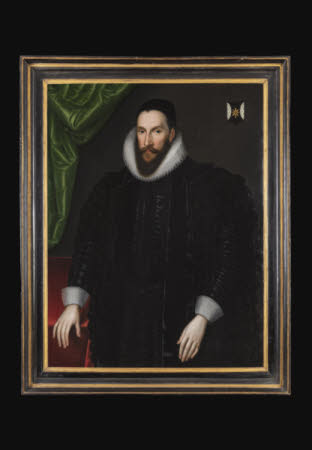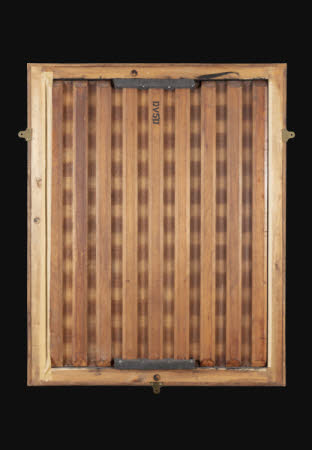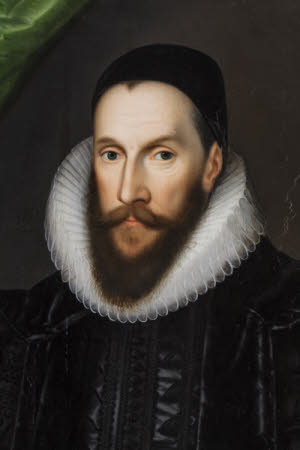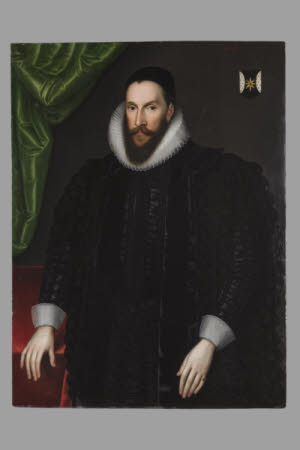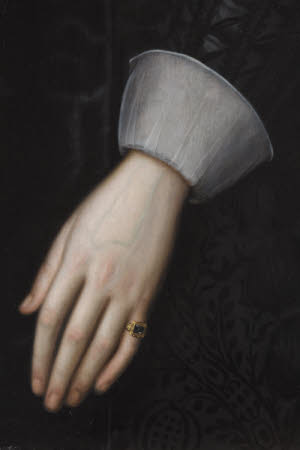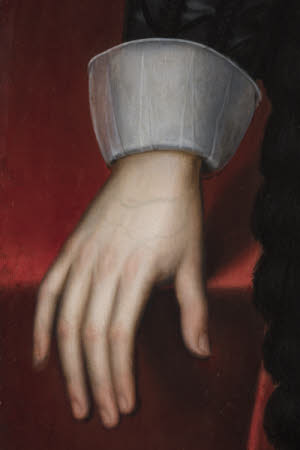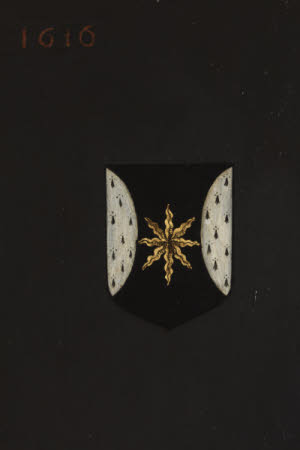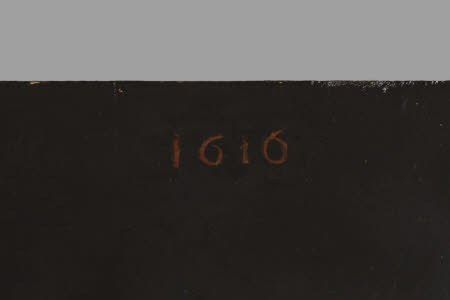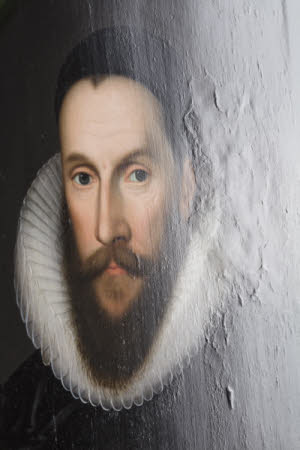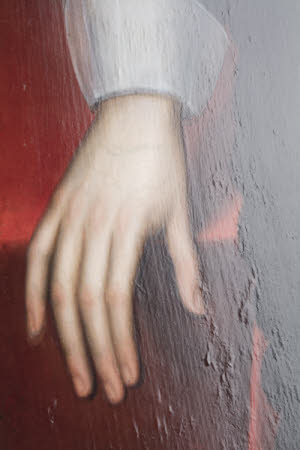Sir Henry Hobart, 1st Bt. (c.1554-1625)
circle of William Larkin (London c.1585 – London 1619)
Category
Art / Oil paintings
Date
1616
Materials
Oil on panel
Measurements
113.7 x 85 cm
Order this imageCollection
Blickling Hall, Norfolk
NT 357150
Summary
Oil painting on panel, Sir Henry Hobart, 1st Bt. (c. 1554-1625), circle of William Larkin, 1616. A three-quarter length portrait of a man, facing, wearing black with white cuffs and ruff and black cap. The sitter's proper right hand rests upon a table covered with red cloth. Against a dark background with green silk drapery at top left, the sitter's coat-of-arms at top right.
Full description
This striking portrait is the earliest known image of the lawyer and politician, Sir Henry Hobart, 1st Baronet. It was painted in 1616, the year in which Hobart acquired the manor of Blickling and began an ambitious building programme that transformed the medieval house into the Jacobean Hall we see today. His architect was Robert Lyminge, who had earlier designed Hatfield House for his patron and close associate, Robert Cecil, Earl of Salisbury (1563-1612). Knighted in 1603 at the coronation of King James I, Hobart became attorney of court of wards and liveries two years later and was famously involved in the government's response to the Gunpowder Plot. His influence at court was reflected in the baronetcy bestowed on him in 1611. He served briefly as chancellor to Henry Frederick, Prince of Wales, before the Prince’s early death from typhoid on 6 November 1612 and was appointed chief justice of common pleas in 1613 and chancellor and keeper of the seal to Henry’s younger brother Prince Charles, from 1617. According to Judge Jenkins: 'in Hobart were many noble things, an excellent eloquence, the éclat of ancestry, the most engaging sweetness animated with a singular gravity' (Lothian MSS, viii, quoted in Handley, S., Hobart, Sir Henry, first baronet (c. 1554–1625), lawyer and judge. Oxford Dictionary of National Biography). In 1590 Hobart had married Dorothy Bell (bap. 1572, d. 1641) of Beaupré Hall, Norfolk, whose father Robert (d.1577) had been a judge and speaker of the House of Commons. They had twelve sons and four daughters, eight sons and two daughters surviving them. Hobart died in December 1625, before the construction of Blickling Hall was complete, and is buried in Blickling Church, at the entrance to the Hall. The portrait is one a small but distinct group of works by a painter identified as a contemporary follower of William Larkin. The painterly treatment of the flesh reveals the sitter’s distinguishing features. The ring on his left hand can also be seen in the later portrait of him in his chancellor’s robes by Daniel Mytens (NT 355515).
Provenance
By descent to Sir Heneage Finch (1580 – 1631); thence by descent to William Henry Montague Finch (1883- 1939), Burley-on-the- Hill, Rutland; thence by descent to his cousin Col. James Robert Hanbury (1914-1971), Burley-on-the-Hill, Rutland; by whom sold, Christie’s London, 20 June 1947, lot 34, (for 20 gns.); with Spink & Son; by whom sold to Sir Leonard Caplan QC (1909-2001); by whom sold, Christies London, 18 November 1983, lot 30 (for £6,480); with Lane Fine Art, Pimlico, London; by whom sold to a private collection, England; purchased by the National Trust from the Weiss Gallery, London, 2022.
Makers and roles
circle of William Larkin (London c.1585 – London 1619), publisher
